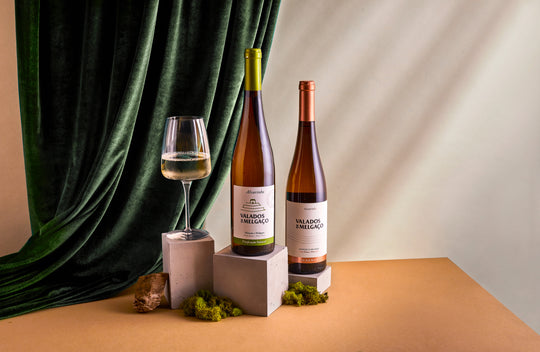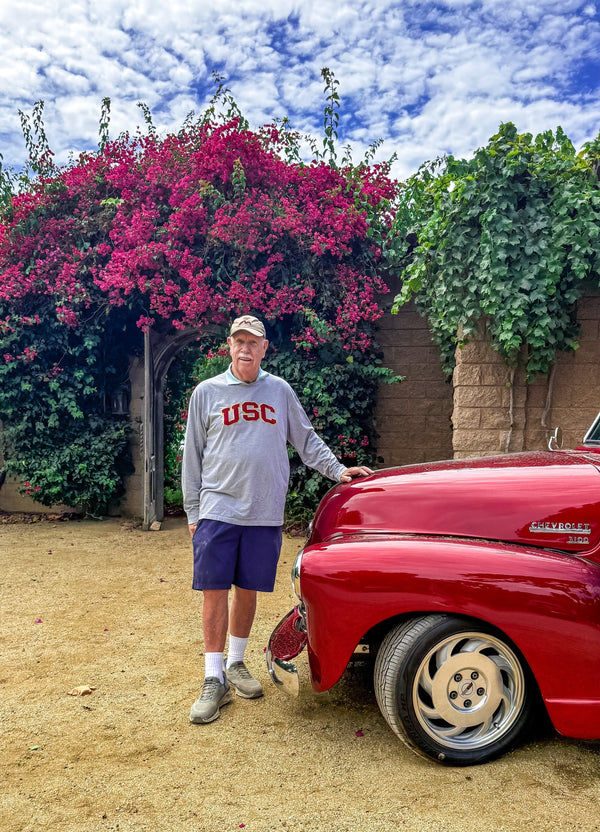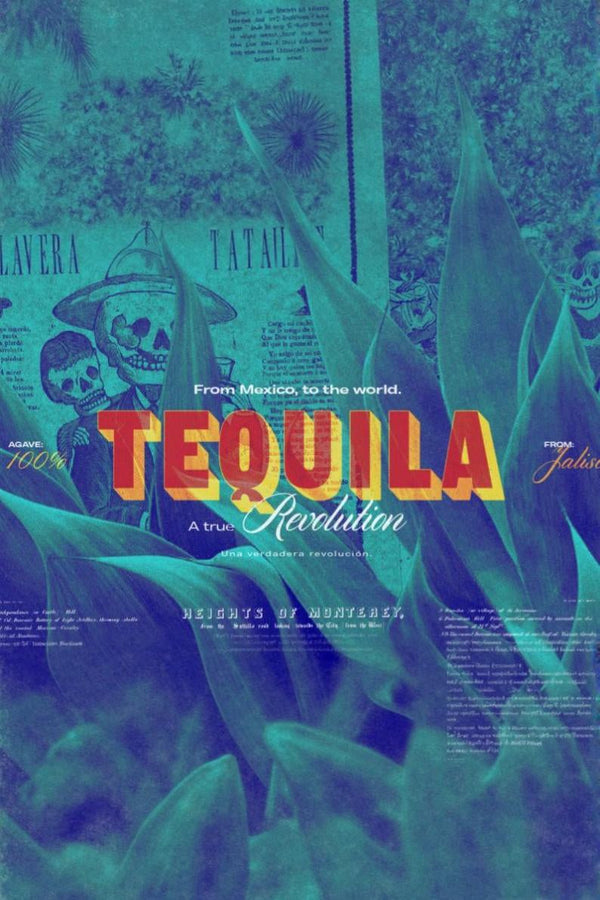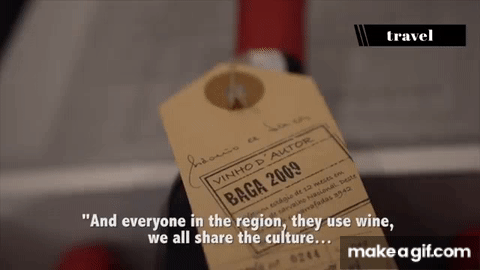The Island That Became a Vineyard: Jim York and the Palos Verdes Peninsula AVA

On a coastal bluff where hawks glide over terraced rows of Pinot Noir and the breeze smells faintly of rosemary and salt, Jim York is building something rare: a serious wine legacy in a place most people don’t even know has vineyards.
Welcome to Catalina View Wines, tucked into the Palos Verdes Peninsula, not Napa, not Sonoma, not even Santa Barbara. But something else. Something distinct. And thanks to Jim, now officially recognized as the Palos Verdes Peninsula AVA.
Jim, a longtime resident and former real estate developer, found himself the unlikely owner of over 90 acres of coastal property in the 1990s. One morning he woke up, looked at the land, and asked the obvious question: What now? The answer, it turned out, was wine.
Jim is now on his fourth career, and he takes this one the most seriously. He brought in vineyard consultants from Napa, evaluated soils that hadn’t been farmed since the 1970s, and worked with Santa Barbara winemaking legend Ken Brown (AKA Prince of Pinot) to develop a Pinot Noir and Chardonnay program tailored to this very specific piece of land.
And what a piece of Heaven it is.
The Palos Verdes Peninsula, millions of years old, shares its geologic story with the Channel Islands. In fact, it was once an island itself! (Source) Cut off from the mainland just like its offshore cousins. Both are part of the Transverse Ranges, a rare east-west running set of mountains formed by tectonic plate movement. Around 13 to 15 million years ago, the landmass that now forms Palos Verdes began to rise from the ocean, only later connecting to the mainland through sediment deposits. Today, this coastal bluff still holds evidence of its marine past: abalone shells, fossil beds, and wave-cut terraces. Geologically speaking, Palos Verdes is a cousin of the Channel Islands—formed through the same seismic uplift and slow rotation that gave Southern California its most dramatic coastlines.
This unusual history makes Palos Verdes fundamentally different from the flat expanses surrounding Los Angeles. It’s a place of microclimates and edges—exposed to the Pacific on three sides, shaped by daily fog, high winds, and long, sloping sunlight. For agriculture, it’s not always easy. But for wine grapes? It can be magic.
The soil is a jigsaw puzzle of loamy clay, sand, shale, and basalt. There are only 8 to 12 feet of topsoil before you hit rock, a nightmare for most crops, but a dream for wine grapes, which thrive on the edge of struggle.
“You want the vines semi-stressed,” York says, gesturing toward the rows. “It keeps the grapes small, concentrated, flavorful.”
South-facing slopes soak up the sun; ocean fog rolls in each morning to cool the vines. There are no frost issues. There are also no shortcuts. Netting goes up every season to fend off birds. Coyotes have developed a taste for Pinot. Even the bees have been a challenge, thanks to invasive Africanized hives.
Recognizing just how unique this environment was, York set out to formalize it. The result was the creation of the Palos Verdes Peninsula AVA, federally recognized in 2021. It became California’s 142nd AVA, and perhaps one of its most unexpected. The designation wasn’t just a label upgrade—it was a declaration that this land, this coastal plateau at the edge of Los Angeles, had something singular to say through its wine.
To gain AVA status, York compiled climate data, soil samples, and historical records showing the region’s distinct identity. The process was slow, rigorous, and mostly self-driven. But the result speaks volumes. Now, instead of being lumped in with generic "California" wine, bottles from Catalina View can say exactly where they’re from.
But what emerges from that chaos is something remarkable. York produces around 600–700 cases per year, all certified organic, all sold locally to restaurants that can literally see Catalina Island from their tables. There’s no wine club, no tasting room. No wine leaves the region.

Chardonnay is crafted in two styles: a classic Burgundian version aged in neutral and lightly used French oak, and a richer Reserve bottling with 50% new oak. The Pinot Noir is elegant and restrained, aged in barrel and built to last. There’s also a rosé of Pinot—Provence-style, stainless steel fermented, screw-cap, meant to be chilled and enjoyed now.
Jim doesn’t make these wines alone. His winemaking partner, Ken Brown, is a pioneer of California Pinot Noir, best known for shaping the Santa Barbara wine scene through his work at Zaca Mesa and Byron Winery. Their collaboration is grounded in shared values: restraint, respect for terroir, and a focus on balance over brawn. Brown was selective when choosing partners in his semi-retirement, but he saw in Jim’s vineyard something special—a site worth exploring, not exploiting.
The partnership is quietly producing some of the most site-expressive wines in Southern California. Each vintage is a study in microclimate, with fog and sun shaping structure and acidity in subtle ways. The grapes are harvested with precision, often in the early morning hours to preserve freshness, then taken to Buellton for crush and fermentation.
The property itself is more than a vineyard. It’s a working organic farm producing avocados, citrus, heirloom tomatoes, and herbs used by local chefs at restaurants like Terranea Resort just across the street. Jim calls it “farm-to-glass,” but it’s really a closed-loop ecosystem: the chefs walk across the road to pick produce and pour wine made from the same soil.
And the labels? All original artwork by local painters, including watercolors by Katrina Vanderlip (granddaughter of Palos Verdes founder Frank Vanderlip) and evocative oil paintings by Rick Humphrey, whose work captures the character and landscapes of the Peninsula (rickhumphrey.com/palos-verdes). The aesthetic is local. The story is local. The wine is local.
There’s also a cinematic quality to the setting. With views of Catalina Island, a private half-mile driveway, and oceanfront elevation, the vineyard has become a low-key favorite for film crews and weddings—when weather and city permits allow.
This isn’t wine meant to conquer the world. It’s wine that belongs to a place. And in a landscape shaped by tectonic drift, ocean winds, and one man’s fourth career, it tastes exactly like where it’s from.










